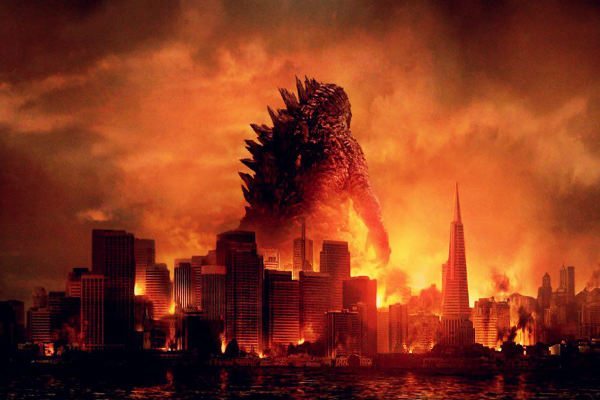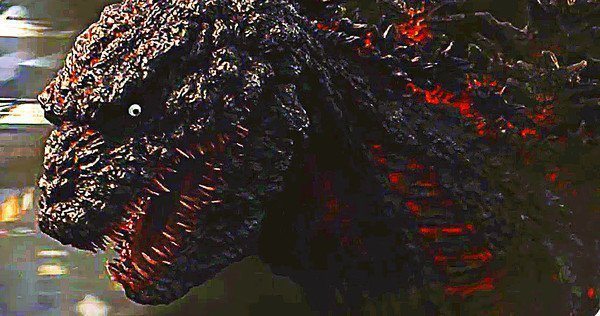
1. It’s the Biggest Godzilla Ever Seen on Screen
The Godzilla in the original 1954 film, directed by Ishiro Honda, was a mere 164 feet (50 meters) tall, though in reality it was actually less than six feet as it was played by Haruo Nakajima in a suit, with the models of the buildings he was shown crushing shrunk down to size. Nakajima played Godzilla in 12 movies, along with numerous other ‘kaiju’ in Japanese monster movies until his retirement in 1972. By 1991, Godzilla had doubled in size to 328 feet and Legendary’s 2014 incarnation came in at 354 feet. Perhaps inevitably, Toho decided to top that in Godzilla Resurgence, with the new monster a lofty 389 feet (118.5 meters). For the Japanese premiere of the film, the red carpet was laid out so that its length matched the height of the monster.
2. The United States Doesn’t Get Great Press in the Movie
As in many Japanese movies and TV dramas, the Americans in Godzilla Resurgence are little more than stereotypes: arrogant and high-handed while ordering the government in Tokyo around and threatening to nuke Godzilla in the middle of the Japanese capital. The U.S. government representative, a Japanese-American played by Satomi Ishihara, is the embodiment of this; dismissive of efforts to deal with the monster while she simultaneously flirts with every male she is on screen with. Ishihara chops between speaking Japanese and unconvincing English, sometimes mid-sentence. It will be interesting to see whether her stilted English is overdubbed for the U.S. release.
3. There is a Cast of More Than 300…But Only Three Significant Female Roles
Toho assembled an all-star cast of Japanese actors for the production, so many that it is sometimes difficult to keep track of all the characters involved. But despite this impressive number, other than Ishihara, the only meaningful female characters are Mikako Ichikawa’s geeky public official who rattles off scientific jargon in a robotic manner and veteran actress Kimiko Yo’s stern, no-nonsense government minister.

4. The 2011 Tsunami and Fukushima Nuclear Disaster Was a Major Influence
The original Godzilla, released less than a decade after Hiroshima and Nagasaki, played on anxieties about a newly nuclearized world. Godzilla Resurgence riffs heavily on the March 2011 earthquake, tsunami and nuclear disaster. The monster is again the result of a nuclear accident, but the references to 2011 are clear and abundant (though many will go over the heads of audiences outside Japan). The images of destruction wreaked by the monster are eerily reminiscent of the aftermath of the tsunami, while government ministers don overalls in the movie, as they did during the real nuclear crisis. And the scene where the prime minister tells the public that Godzilla won’t be able to come onto land appears to be a clear jab at the authorities’ denials that the reactors at Fukushima were melting down.
5. There is More Tense Deliberation Than Terrible Destruction
Despite the carnage, Godzilla Resurgence also features a number of lengthy meetings in which the government, scientists, public officials and the military agonize over how to deal with Godzilla, interspersed with scenes of the monster flattening Tokyo. Although poking fun at the elaborate machinations of Japanese bureaucracy and politicians strikes a chord with local cinemagoers, global audiences may find themselves hungry for more ‘kaiju’ action.
Godzilla is back in full force!